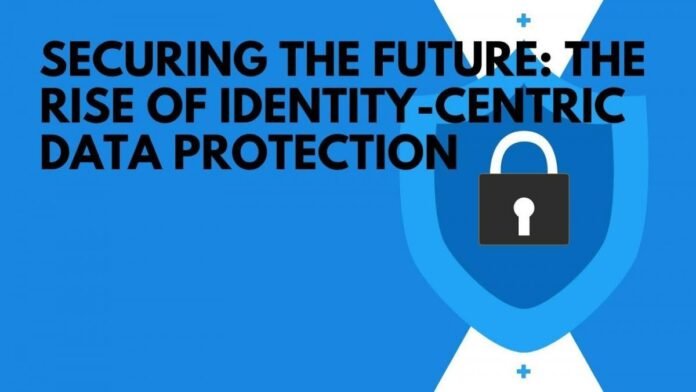The Evolution of Cybersecurity: Embracing Identity-Centric Security Models
In an era where digital landscapes and agentic AI are evolving rapidly, traditional security frameworks are proving insufficient against sophisticated cyber threats. As organizations face increasingly complex challenges, the need for a paradigm shift in cybersecurity has never been more pressing. The focus is shifting from network-based defenses to identity-first security approaches, which emphasize the importance of managing and protecting user identities as the primary security perimeter.
Zero Trust: A New Security Paradigm
At the forefront of this transformation is the Zero Trust architecture, which has emerged as a cornerstone of modern cybersecurity strategies. Unlike traditional security models that rely on implicit trust within network boundaries, Zero Trust operates on the principle of “never trust, always verify.” This approach mandates continuous authentication and authorization for all users and devices, ensuring that access is granted based on the dynamic context of identity risks and behavior rather than assumptions.
Organizations adopting the Zero Trust framework significantly reduce their vulnerability to credential-based attacks and unauthorized access. By treating every access request as a potential threat, they can implement stringent security measures that adapt to the evolving landscape of cyber threats.
Innovations in Identity and Access Management (IAM)
Identity and Access Management (IAM) has become the backbone of data privacy protection. Effective IAM systems incorporate several key components:
-
Identity Governance and Administration (IGA): This establishes structured policies for managing user identities, ensuring that access rights align with job responsibilities and are revoked when no longer needed. By maintaining strict control over who has access to what, organizations can minimize the risk of data breaches.
-
Risk-Based Authentication: Moving beyond static passwords, this system adapts authentication requirements based on contextual risk factors such as device security posture and identity behavioral patterns. This dynamic approach enhances security by ensuring that only legitimate users gain access.
-
Role-Based Access Control (RBAC) with Trust Scoring: By using dynamic trust assessments, organizations can restrict data access based on evolving risks, enforcing the principle of least privilege. This ensures that users only have access to the information necessary for their roles.
- Continuous Authentication: This model ensures ongoing user verification throughout sessions, significantly reducing the risk of compromised credentials. By continuously assessing user behavior, organizations can detect anomalies that may indicate a security breach.
Dynamic Access Management and Risk-Based Frameworks
Cybersecurity is no longer a static field; it is a dynamic environment that requires adaptive strategies. Risk-based frameworks leverage behavioral analytics and dynamic scoring to evaluate authentication and authorization requirements. By continuously analyzing user behavior and contextual factors, organizations can detect anomalies that may indicate a security breach.
Contextual authentication frameworks consider variables such as geographical location, device health, and network characteristics to determine access legitimacy. These dynamic models enhance security without compromising user experience, striking a balance between security and agility.
Regulatory Compliance Through Identity Controls
With stringent privacy regulations such as GDPR and CCPA, compliance has become a major driver of identity-centric security. Organizations must ensure that access to personal data is restricted to authorized personnel and meticulously documented. IAM systems provide essential tools for compliance:
-
Audit Trails and Access Logs: These logs create an immutable record of all identity interactions, which is essential for regulatory audits. They help organizations demonstrate compliance and accountability.
-
Identity Lifecycle Management: By automating the provisioning and deprovisioning of user access, companies can minimize the risk of unauthorized data exposure. This ensures that only current employees have access to sensitive information.
-
Data Traceability: Identity verification ensures that organizations maintain clear records of data access, which is crucial for responding to regulatory inquiries efficiently. This transparency builds trust with customers and regulators alike.
- Privacy by Design: Embedding privacy considerations into IAM frameworks ensures compliance while minimizing security risks. This proactive approach to privacy helps organizations avoid costly breaches and fines.
The Future of Identity-First Security
As cyber threats continue to evolve, so must identity-first security strategies. Emerging trends that are shaping the future of cybersecurity include:
-
Decentralized Identity Models: Self-sovereign identity (SSI) and blockchain-based credentials empower individuals with greater control over their digital identities, reducing reliance on centralized databases. This shift enhances privacy and security.
-
AI-Driven Authentication: Machine learning algorithms enhance risk assessments, detecting anomalies in real-time and improving authentication accuracy. AI can analyze vast amounts of data to identify patterns that may indicate a security threat.
- Biometric Authentication: Passwordless solutions leveraging behavioral traits provide a more secure and frictionless verification process. Biometric authentication methods, such as fingerprint and facial recognition, are becoming increasingly popular as they offer a higher level of security.
Conclusion
The shift toward identity-centric security marks a fundamental change in how organizations protect sensitive data. Identity is now the primary security perimeter, replacing outdated network-based models. Implementing IAM, risk-based authentication, and Zero Trust principles not only enhances security but also ensures regulatory compliance. As we move forward, the integration of AI, decentralized identity, and biometric authentication will continue to redefine the cybersecurity landscape, making identity-first security a crucial pillar of digital protection. Organizations that embrace these innovations will be better equipped to navigate the complexities of the digital age and safeguard their assets against emerging threats.


